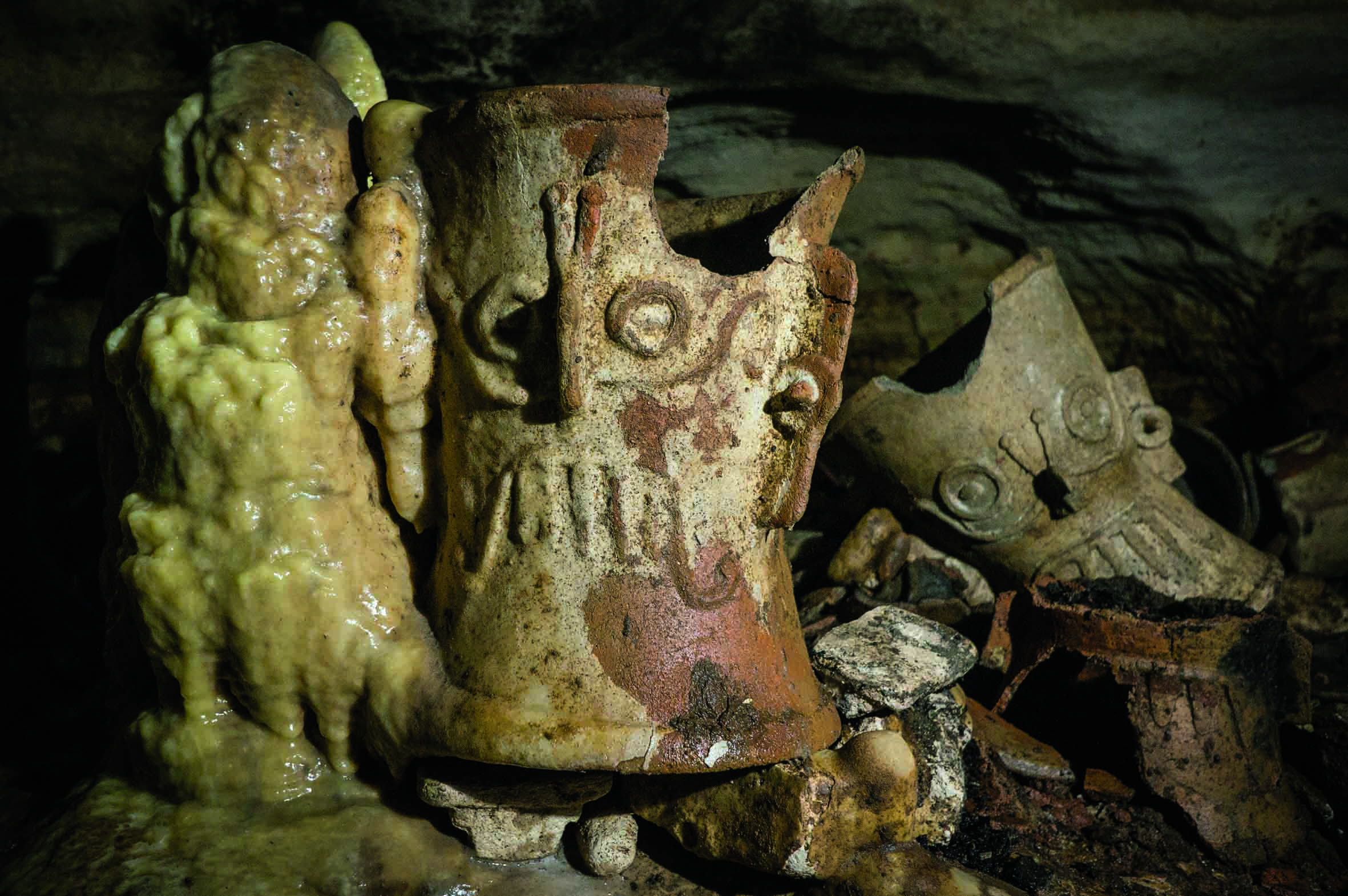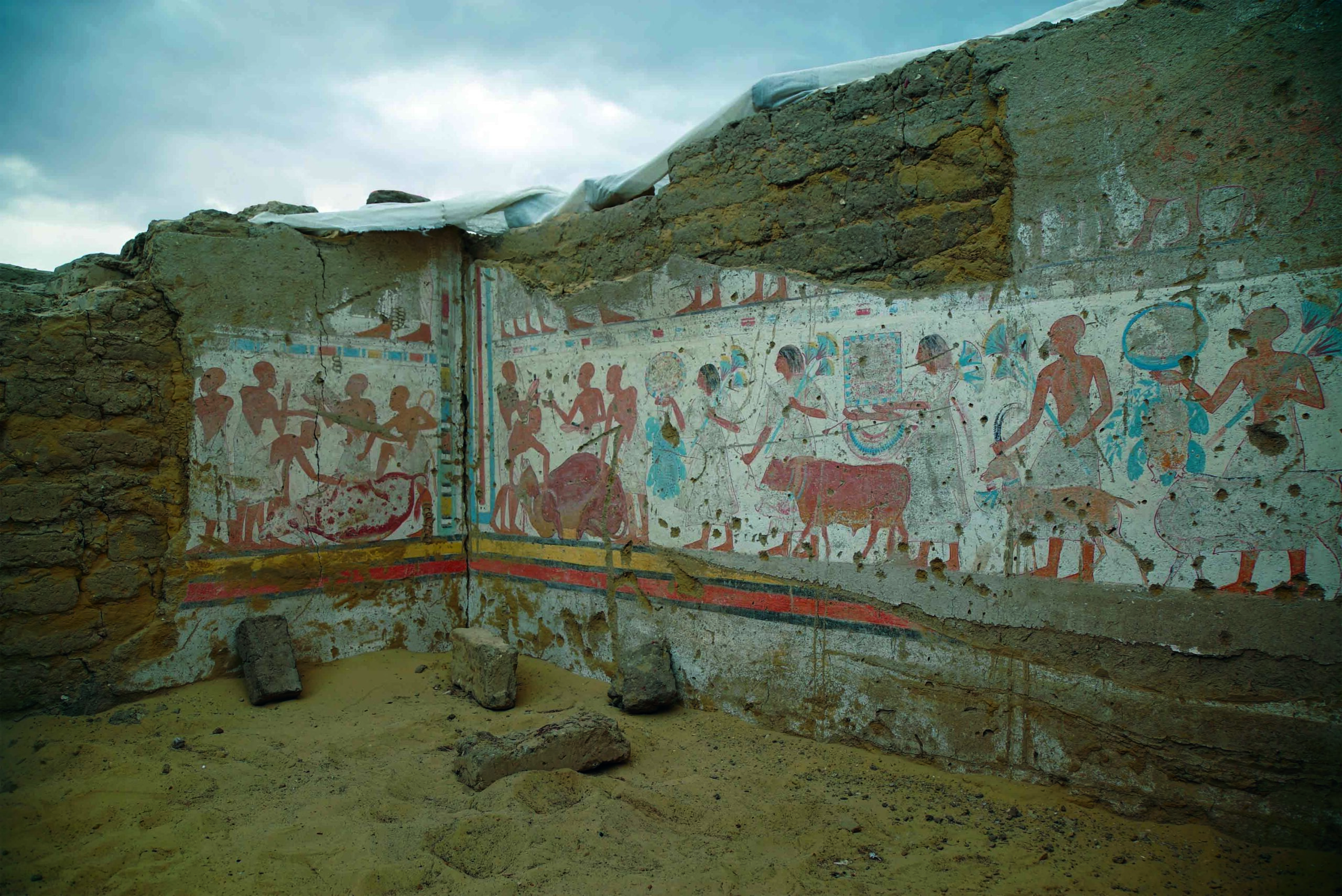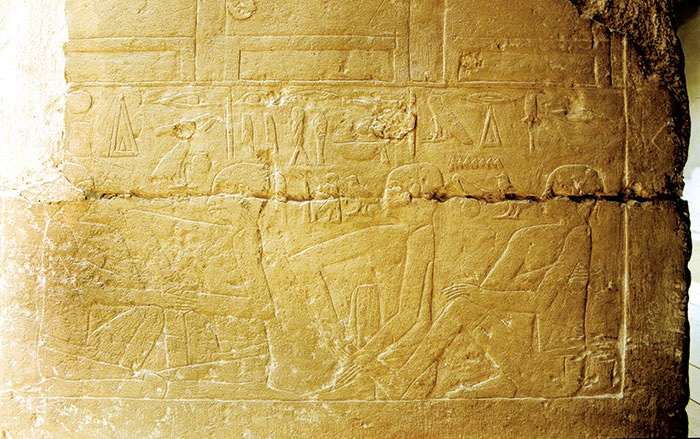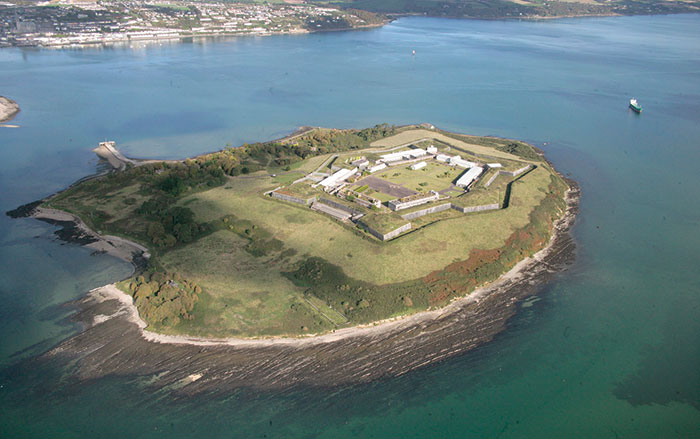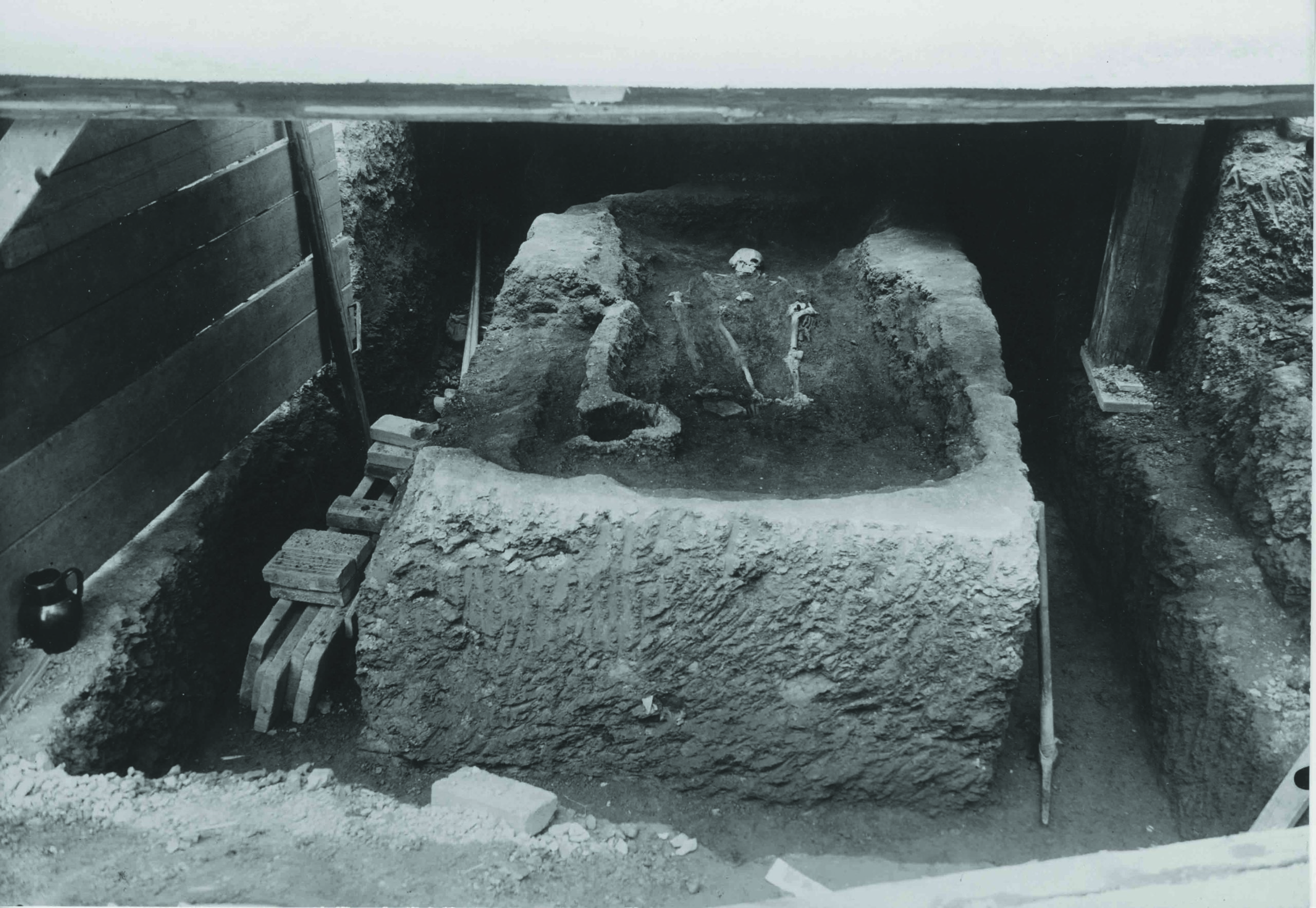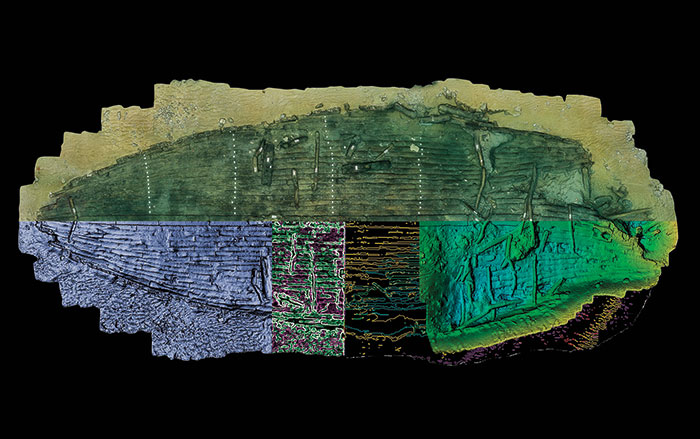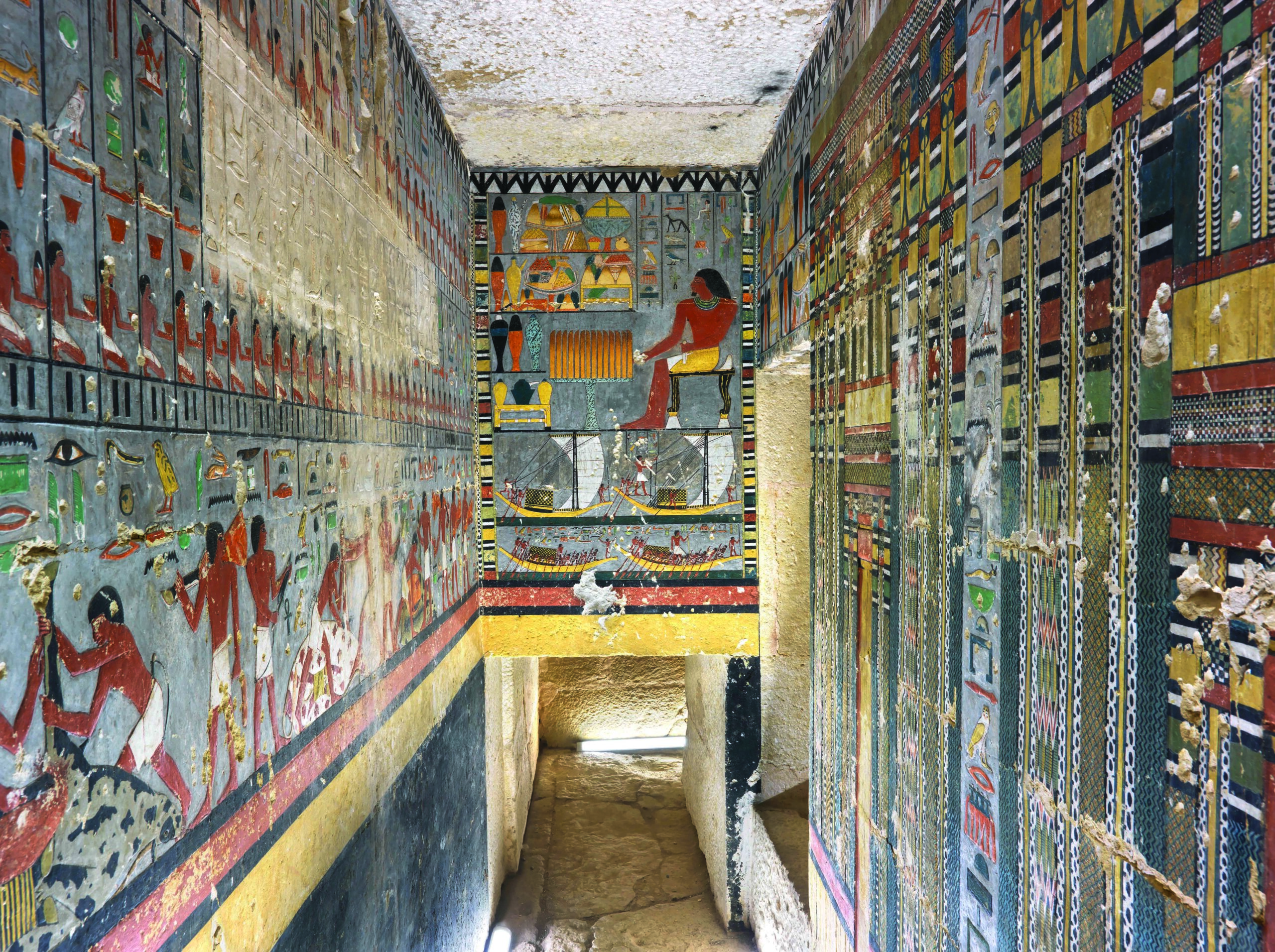

During investigation of the funerary complex of the 5th Dynasty pharaoh Djedkare Isesi (r. ca. 2381–2353 B.C.), a team from the Czech Institute of Egyptology discovered the painted tomb of a high-ranking Old Kingdom Egyptian dignitary. After descending a narrow subterranean tunnel that opened up into a series of rooms, members of the team, led by archaeologist Mohamed Megahed, found hieroglyphs on the walls announcing that a man named Khuwy was entombed within the chamber. The writing also enumerates Khuwy’s many titles, including “Secretary of the King,” “Companion of the Royal House,” and “Overseer of the Tenants of the Great House.”
Alongside the hieroglyphs are scenes painted in colors that remain vibrant even after 4,300 years. One of the main panels depicts Khuwy himself, seated before a table piled high with food, drinks, and other offerings meant to sustain him in the afterlife. “Scenes of the tomb owner are highly unusual in Old Kingdom tombs,” says Megahed. The high-quality paintings, the tomb’s proximity to Djedkare’s own pyramid, and its design—which mimics that of a tomb belonging to a 5th Dynasty pharaoh—all suggest that Khuwy played a prominent role in the royal court.



